
21-12-2025 09:32
Hello.A tiny ascomycete found embedded in wood in

21-12-2025 21:32
Pol DebaenstHello, Garden, Burgweg 19, Veurne, BelgiumOn 10/1

22-12-2025 23:38
Patrice TANCHAUDBonsoir, récolte sur un mur en pierre, apothéci

22-12-2025 00:47
Patrice TANCHAUDBonsoir, récolte à proximité du milieu dunaire

21-12-2025 21:40
Isabelle CharissouBonjour, j'aimerais connaitre les références de

20-12-2025 23:08
Patrice TANCHAUDBonsoir, récolte sur sol sablonneux dans l'arri�

Hi All,
I have found a strange and distinctive Ascomycete growing on damp soil close to a brook. Only a single apothecium thus far.
Apothecium: c1x0.5mm. Hymenium convex, bright red, not clearly demarced from the excipulum.
Asci: Cylindric, 250-325x18-25. 4-5 spored, uniseriate, with differetial maturation of the ascospores. Ascus pore blueing in Melzer' after treatment with KOH.
Ascospores:44-50x15-19. Ellipsoid-cylindric, some curved and some with strangely attenuated apices. With polar guttules. With a gelatinous coat.
Paraphyses with red pigment, swollen to 6-7.
Excipulum: Textura Globosa.
I would be very interested in any thoughts on this. Thanks in advance.
Charles.


Hi Zotto,
Yes, the t. prismatica is from the stipe. Have not tested with Lugol and very little material remains (on a couple of slides) Will definitely look out for more material-not far from where I live in Pentraeth, Anglesey.



Hi Zotto,
Its the ascus width that I had got wrong-it should be 250-325x18-25, so really quite large. Being Sclerotiniaceous I imagine the fungus would have been associated with plant material perhaps with a sclerotium but, unfortunately it quickly became detached from the substrate. There was some Mnium hornum fairly close but I don't think the fungus was associated with it. The site was in broad leaved woodland with ash etc.

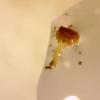
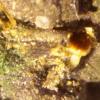
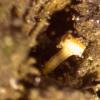
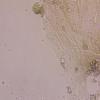
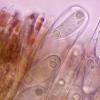
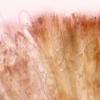
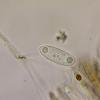
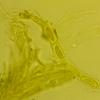
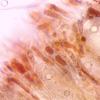
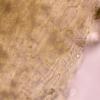
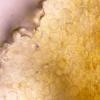
 rsz-red-stipitate-disco-asci-7-rhiwlas-pentraeth-7420-0001.jpg
rsz-red-stipitate-disco-asci-7-rhiwlas-pentraeth-7420-0001.jpg